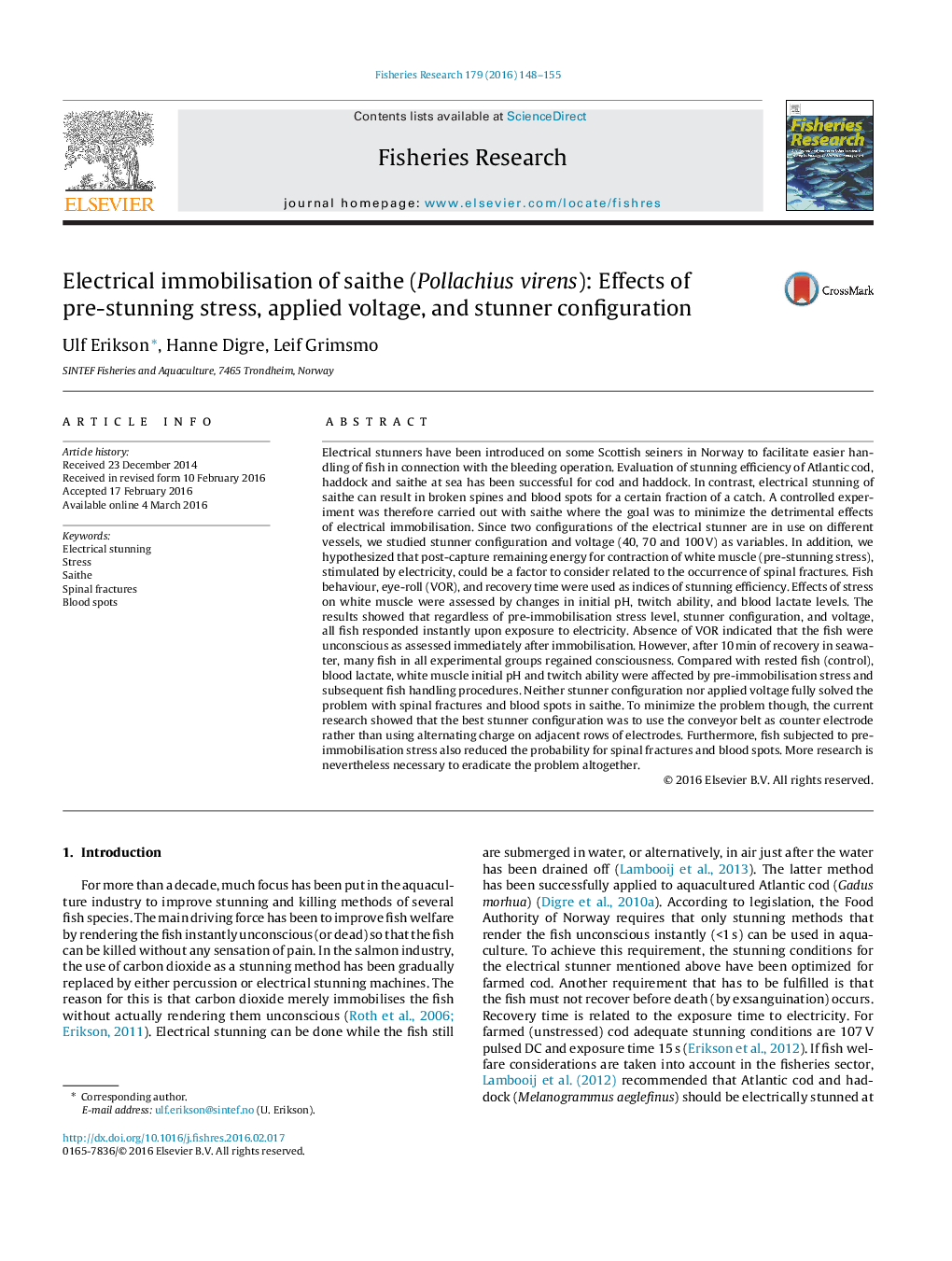| Article ID | Journal | Published Year | Pages | File Type |
|---|---|---|---|---|
| 6385348 | Fisheries Research | 2016 | 8 Pages |
Abstract
Electrical stunners have been introduced on some Scottish seiners in Norway to facilitate easier handling of fish in connection with the bleeding operation. Evaluation of stunning efficiency of Atlantic cod, haddock and saithe at sea has been successful for cod and haddock. In contrast, electrical stunning of saithe can result in broken spines and blood spots for a certain fraction of a catch. A controlled experiment was therefore carried out with saithe where the goal was to minimize the detrimental effects of electrical immobilisation. Since two configurations of the electrical stunner are in use on different vessels, we studied stunner configuration and voltage (40, 70 and 100Â V) as variables. In addition, we hypothesized that post-capture remaining energy for contraction of white muscle (pre-stunning stress), stimulated by electricity, could be a factor to consider related to the occurrence of spinal fractures. Fish behaviour, eye-roll (VOR), and recovery time were used as indices of stunning efficiency. Effects of stress on white muscle were assessed by changes in initial pH, twitch ability, and blood lactate levels. The results showed that regardless of pre-immobilisation stress level, stunner configuration, and voltage, all fish responded instantly upon exposure to electricity. Absence of VOR indicated that the fish were unconscious as assessed immediately after immobilisation. However, after 10Â min of recovery in seawater, many fish in all experimental groups regained consciousness. Compared with rested fish (control), blood lactate, white muscle initial pH and twitch ability were affected by pre-immobilisation stress and subsequent fish handling procedures. Neither stunner configuration nor applied voltage fully solved the problem with spinal fractures and blood spots in saithe. To minimize the problem though, the current research showed that the best stunner configuration was to use the conveyor belt as counter electrode rather than using alternating charge on adjacent rows of electrodes. Furthermore, fish subjected to pre-immobilisation stress also reduced the probability for spinal fractures and blood spots. More research is nevertheless necessary to eradicate the problem altogether.
Related Topics
Life Sciences
Agricultural and Biological Sciences
Aquatic Science
Authors
Ulf Erikson, Hanne Digre, Leif Grimsmo,
